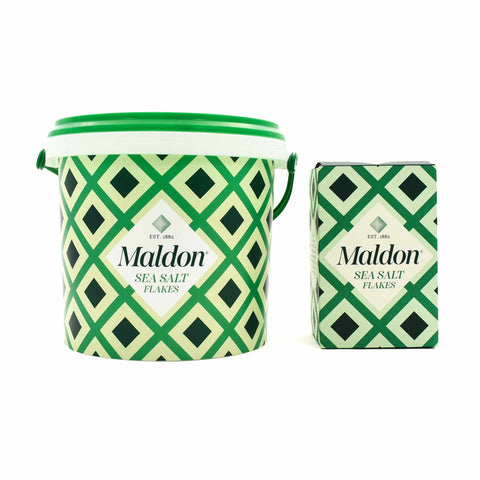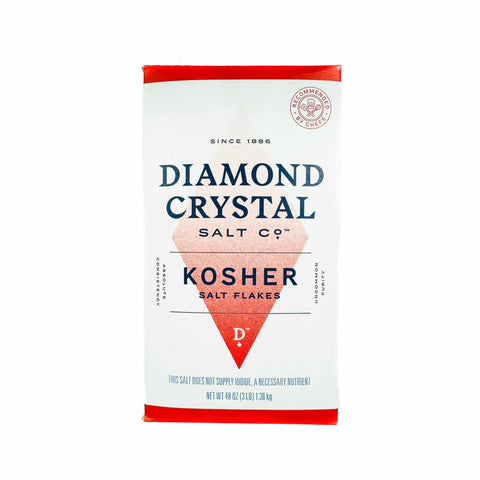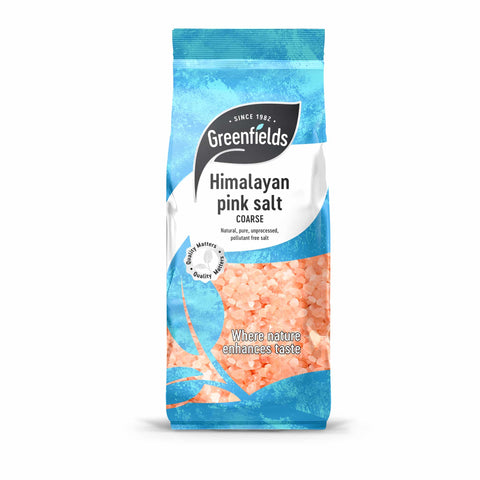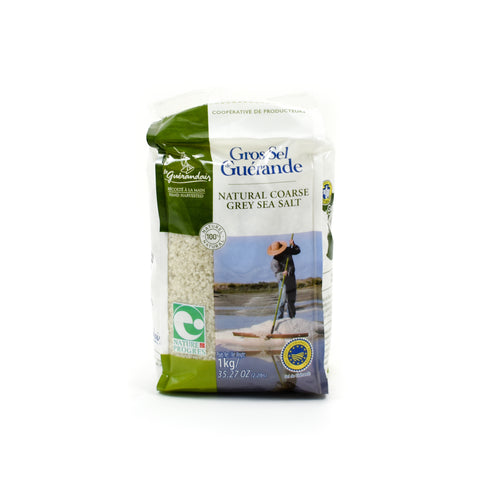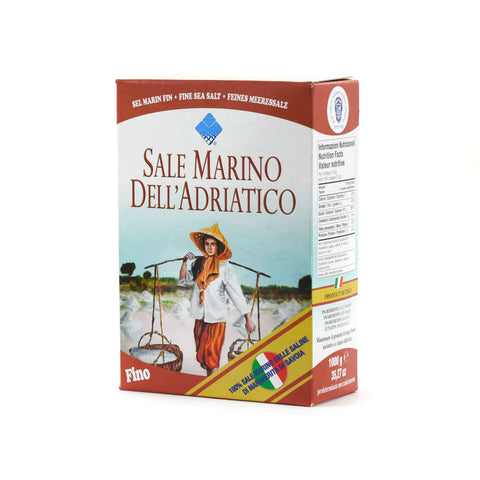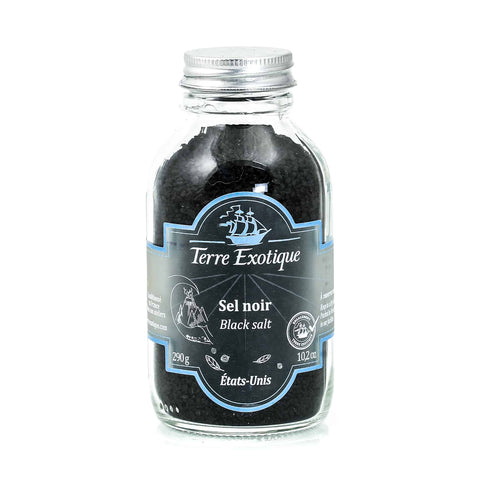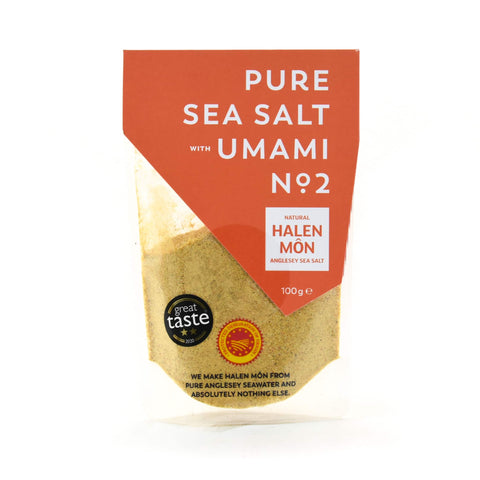The Buyer's Guide to Salt
by Ellie Edwards

What is salt?
Salt is a mineral compound, and one of the oldest forms of seasoning as well as a traditional method of food preservation. There are numerous varieties of salt, from fleur de sel to sea salt to Himalayan pink salt. Each type has its best uses, whether that’s seasoning a dish, or sprinkling at the end for a finishing touch.
Where does salt come from?
Read on to discover where the different varieties of salt come from:
- Himalayan salt comes from the foothills of the Himalayas – specifically from the Punjab region of Pakistan. The salt crystals started to form hundreds of millions of years ago when this region was still below sea level. Unlike sea salt, Himalayan salt is minded.
- Sea salt occurs as a result of seawater evaporation. As the water dries up, the salt crystals are harvested, either by hand, or by machinery.
- Kosher salt is either harvested from seawater, or from rock salt deposits in salt mines. This salt gets its name from the Jewish tradition of ‘koshering’ meat, by drawing blood using salts. Kosher butchers chose this salt with slightly larger flakes, and so it became universally known as ‘Kosher salt’.
- Fleur de sel is hand-harvested from sea water, but unlike regular sea salt, it comes from the delicate surface layer of salt marshes. Fleur de sel is the extra virgin olive oil of the salt world. Fleur de sel crystals are fine in texture, dissolving more quickly than other salts.
- Black salt (also referred to as rock salt, kala namak or saindhav) is a type of salt mined in India. The crystals are obtained from salt mines around the foothills of the Himalayas as well as Pakistan and Nepal.
What is the best salt to use?
The best salt to use depends on what you’re cooking, and whether you’re using the salt as a seasoning during cooking, or as a finishing touch before serving. These are the best salts to use for different purposes:
- Sea salt – use sea salt during cooking and as a finishing salt. Add it to stews and soups, pour it into boiling water when cooking pasta, or add a pinch to a dish before serving.
- Fleur de sel – this salt is the extra virgin olive oil of the salt world. Cooking with it would be wasteful – it is a luxurious finishing salt to sprinkle over scallops, grilled vegetables or caramel and chocolate desserts.
- Kosher salt – use Kosher salt for cooking, curing and as a finishing touch. Add Kosher salt to water for cooking pasta, sprinkle a pinch over shellfish before serving, or use it when salting meat and fish – the flakes stick to food easily.
- Himalayan pink salt – use Himalayan pink salt as a finishing touch to scallops, grilled vegetables or tomato tarts. This pink salt can also be used in your cooking for a less intense flavour than Kosher salt. This pink salt is also a great option for sprinkling around the rim of cocktail glasses!
- Black salt – compared to sea salt – and even Himalayan salt – black salt has a pungent sulphurous flavour profile, making it perfect for enhancing the likes of paneer, spiced lamb cutlets and aloo gobi. These distinct flavours mean it’s best used for sprinkling over dishes before serving.
- Blue Salt - use the mellow and mild flavour of blue salt for seasoning delicate flavours, such as white fish or carpaccio. This dry salt has a corse texture so is ideal for use in a grinder - it's blue hue will catch the light when added to dishes at the table.
- Smoked and flavoured salts – use these salts to add flavour to a finished dish, from smoky notes to umami flavours.
How to cook with salt?
From seasoning dishes to using it as the star of the dish, salt is one of the most versatile ingredients you can have in your kitchen. Explore our range of salt recipes below:
Guinness and Black Salt Caramels

The sweet caramel recipe is perfectly balanced with a grown-up savoury Guinness finish. The added sprinkle of activated charcoal sea salt brings decoration, texture and hint of minerality.
Caramelised Pineapple with Black Lava Salt and Aleppo Pepper

The charred flavours of black lava sea salt work perfectly with sweet, tropical pineapple. Cut the slices into segments for an elegant canapé or serve whole as an accompaniment to grilled prawns, roast pork or gammon.

Umami and sodium-rich, the katsuobushi magically lifts a dish. Spoon a little over ramen, or really anywhere else at all – instead of anchovies in a lamb dish, a few teaspoons in a winter vegetable soup, and so on.
Will Torrent’s Salted Caramel and Chocolate Tart

Pastry chef and chocolate expert, Will Torrent, has developed and shared this delicious – and beautiful looking – salted caramel and chocolate tart recipe using Guittard's chocolate wafers.
Which salt should I buy?
Maldon’s unique, hand-drawn methods give this salt its distinctive taste and texture. The soft flakes have a clean flavour making it a beautiful finishing salt – sprinkle it over lamb, grilled asparagus or caramel tarts.
Kosher salt grains sit in between fine table salt, which pours smoothly from a shaker, and large sea salt flakes. Diamond Crystal kosher salt is a world-renowned variety, famed for its texture, flavour and the way that the grains stick to food easily.
Greenfields coarse Himalayan pink salt is perfect for grinding in a mill over finished dishes, or using in your cooking for a slightly less intense salty flavour than some other salts. The pink colour comes from traces of iron oxide, and makes it a pretty choice for decorating the rim of cocktail glasses.
Rich in magnesium and trace elements, this coarse sea salt is naturally grey. The salt is hand-harvested by salt workers in Brittany, using skills and a method that are over a thousand years old. Le Guérandais Coarse Guérande Salt is ideal for cooking – sprinkle it over sashimi, use it to make a salt crust for fish or use to season stews.
This Italian fine sea salt is perfect for cooking and curing. Water from the Adriatic Sea evaporates in salting basins leaving residual salt which is then harvested and ground to produce this fine sea salt.
Viking smoked salt is a deep yellow salt, which transforms dishes with intense, Nordic, wood-smoke flavours. This Viking salt is enhanced with onion, black pepper and smoke flavour, making it a great way of bringing complex notes to plainer dishes like potato gratin and soufflés.
Terre Exotique’s black salt is rich in activated charcoal, which gives it the distinctive pitch black colour. The salt is from Hawaii and is a blend of two pure ingredients – black lava rocks and pure seawater. The salt has an oceanic, mineral flavour. Use the large crystals sparingly, as a little will go a long way.
Halen Môn umami sea salt enhances your cooking with a real savoury depth. Nutritional yeast, garlic powder, chilli powder and cumin are paired with Halen Môn’s famed pure Anglesey salt to draw out maximum flavour from anything from risottos to frittatas.
Frequently Asked Questions
Is Himalayan salt better than sea salt?
Himalayan salt isn’t better than sea salt, it just has different uses. Unlike sea salt, Himalayan salt is mined and can be bought in many forms: large rocks, blocks, plates, crystals, coarsely ground and finely ground.
Both salts can be used when cooking, however Himalayan salt is less intense in flavour than sea salt. With its rosy hue, Himalayan salt makes a beautiful finishing salt.
Shop all salt

About the author
Ellie Edwards is a food writer for Sous Chef. Previously she worked at olive magazine, writing about exciting new ingredients, UK restaurants and travelling the world to find the best cinnamon buns. When she's not exploring the likes of Belize, Kerala and Zanzibar, Ellie loves rustling up a feast in her London kitchen, with a particular passion for porridge, sourdough and negronis.
